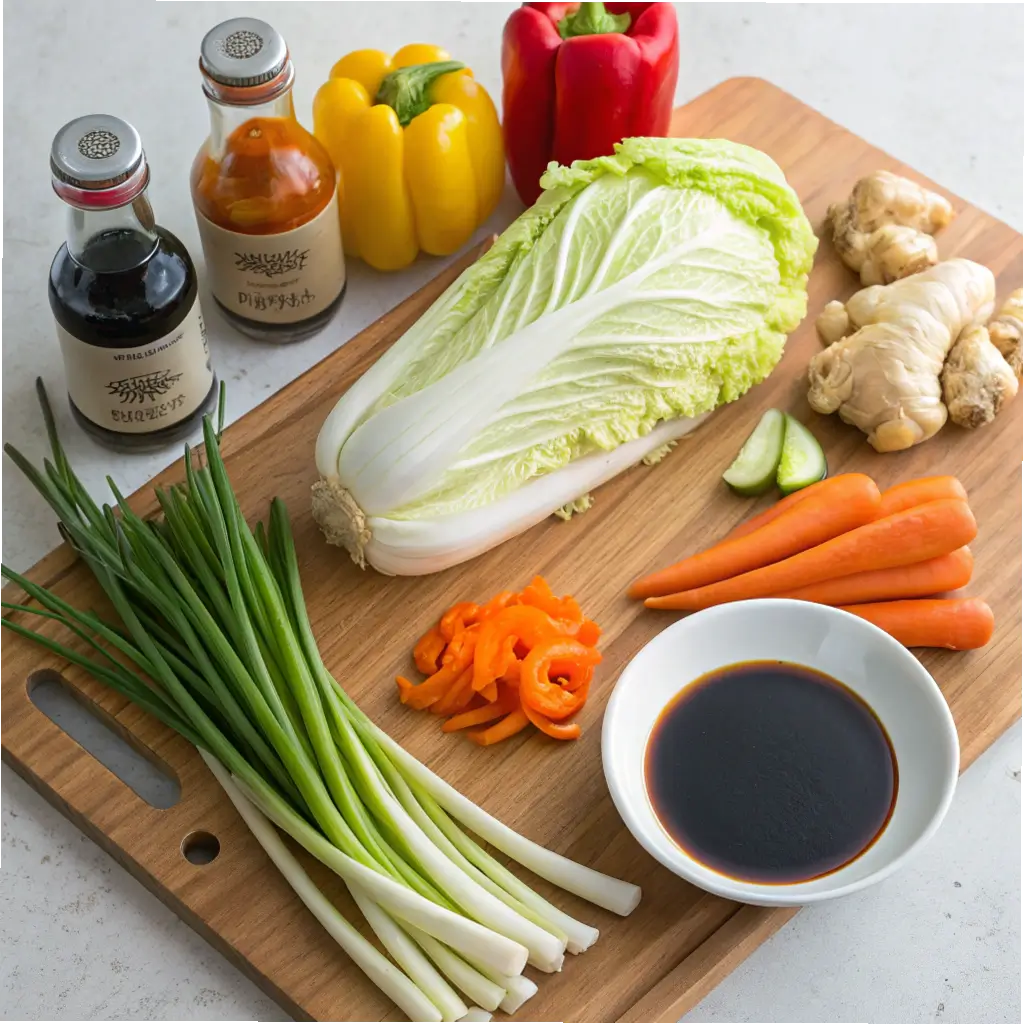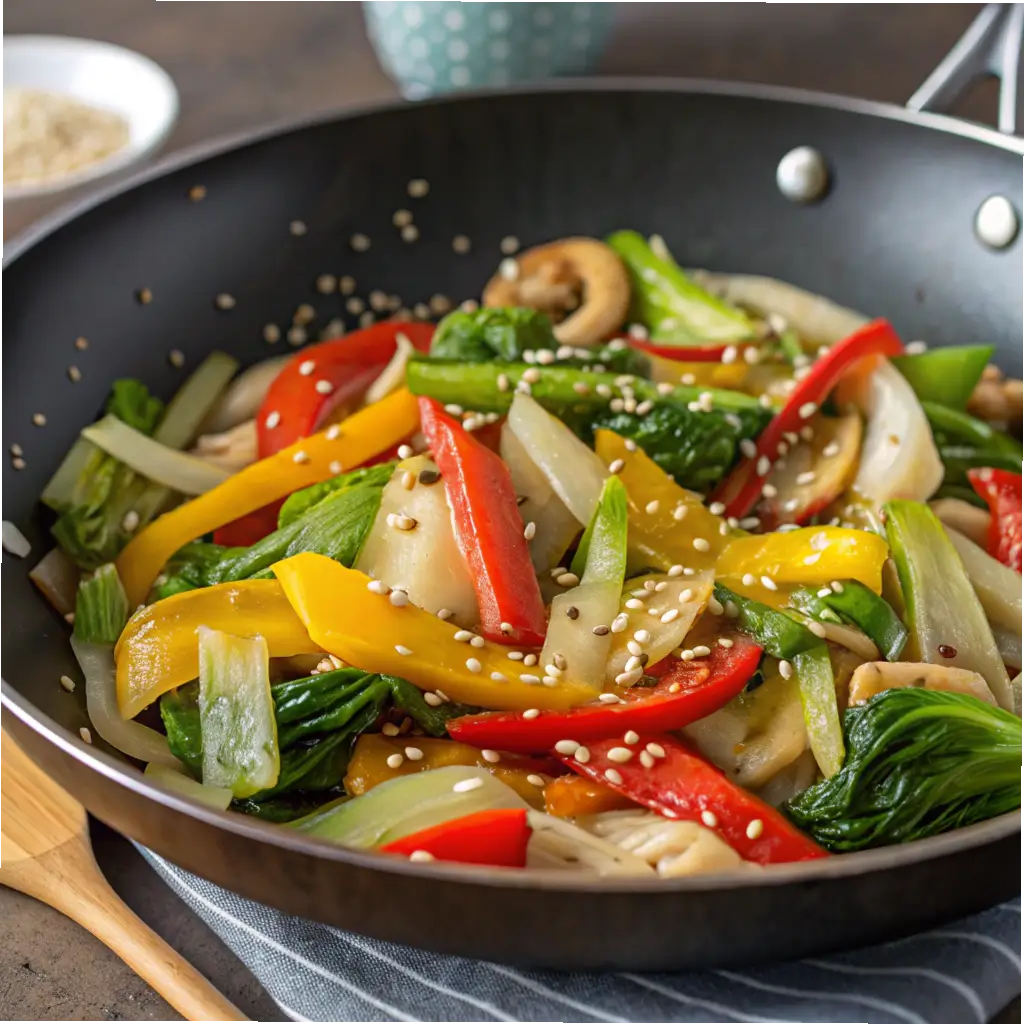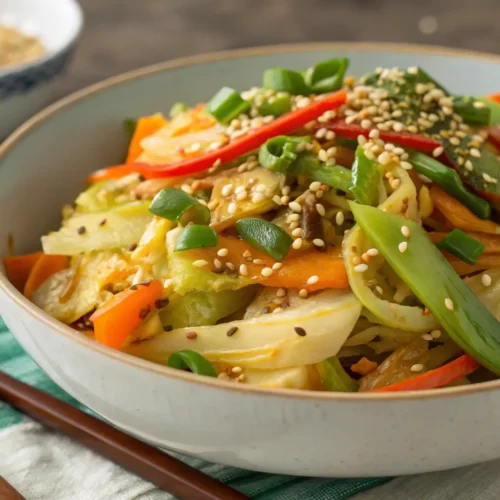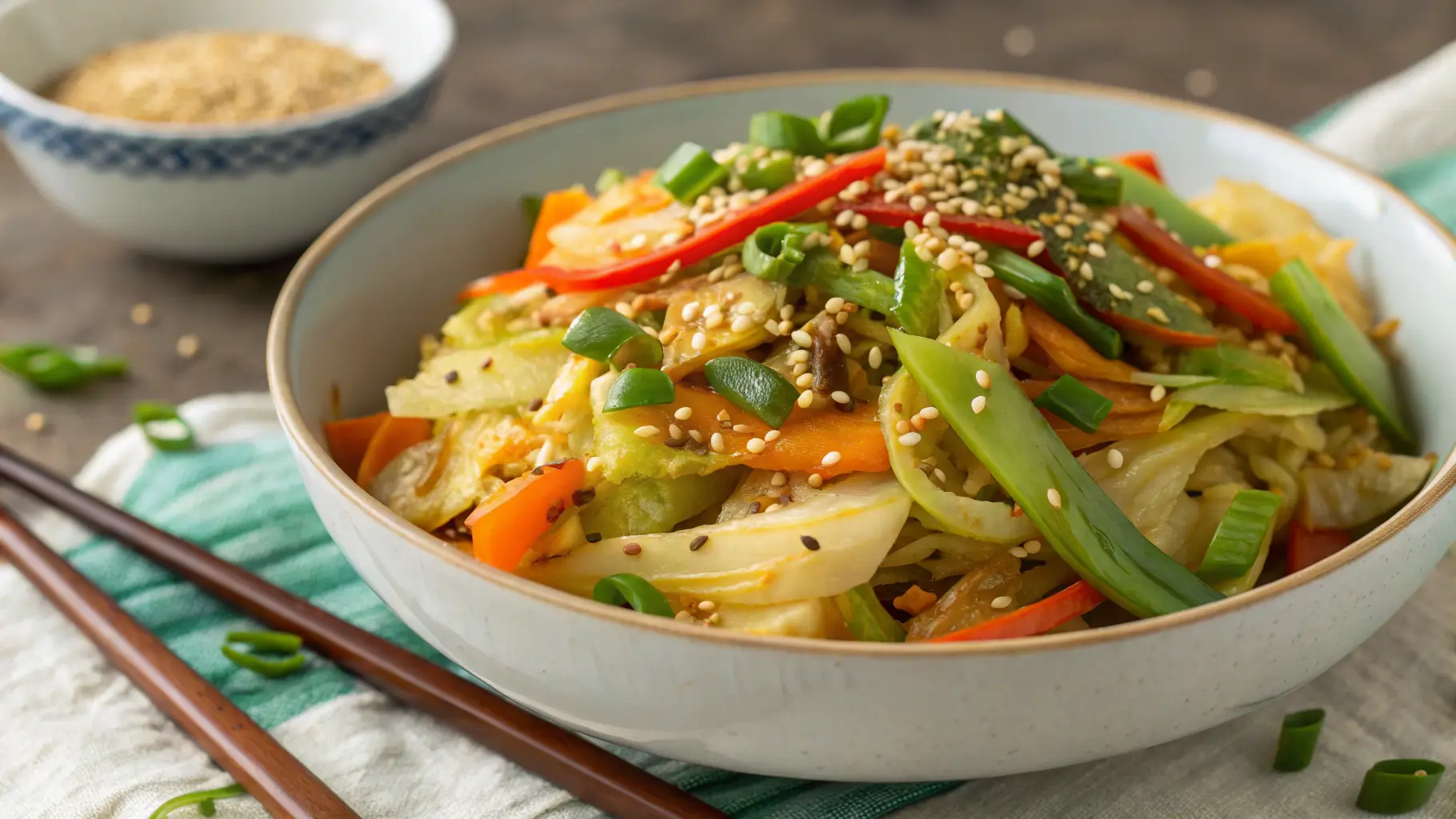Are you ready to explore the delightful world of napa cabbage recipes? This versatile vegetable is not only a culinary star but also a nutritional powerhouse. Did you know that napa cabbage is low in calories and high in fiber? Consequently, it supports digestive health and aids in weight management. Moreover, its rich antioxidant content helps combat oxidative stress, making it a fantastic addition to your meals. In this article, we will dive into various napa cabbage recipes that are both delicious and easy to prepare. So, gather your ingredients and let’s embark on this flavorful journey together!
Table of Contents
Key Benefits of Napa Cabbage Recipes
Napa cabbage is not just a pretty face in the vegetable aisle; it’s a powerhouse of nutrition that can elevate your cooking game. First and foremost, it’s low in calories, making it a fantastic choice for those watching their weight. Additionally, napa cabbage is high in dietary fiber, which promotes digestive health and keeps you feeling full longer. This means you can enjoy your meals without the guilt!
Moreover, napa cabbage is rich in antioxidants, which help combat oxidative stress in the body. This contributes to overall wellness, making it a smart addition to your diet. So, whether you’re whipping up a stir-fry or a refreshing salad, incorporating napa cabbage recipes into your meals can be a delicious way to boost your health.
Here are some key benefits to keep in mind:
- Low-Calorie Delight: Perfect for weight management.
- High in Fiber: Supports digestive health and keeps you satisfied.
- Antioxidant-Rich: Helps fight oxidative stress.
- Versatile Ingredient: Works well in various dishes, from salads to stir-fries.
In summary, napa cabbage recipes not only taste great but also offer numerous health benefits. So, why not give them a try? You might just find your new favorite ingredient!
Ingredients
To create mouthwatering napa cabbage recipes, you’ll want to gather a few key ingredients. Here’s a handy list to get you started:

- Fresh Napa Cabbage: Look for vibrant green leaves and a firm head. This is the star of your dish!
- Garlic: A couple of cloves will add a wonderful aroma and depth of flavor.
- Ginger: Fresh ginger brings a zesty kick. You can use ground ginger in a pinch, but fresh is best.
- Soy Sauce: This salty, umami-rich sauce is essential for seasoning your napa cabbage recipes.
- Sesame Oil: A drizzle of this fragrant oil enhances the overall taste, making your dish truly special.
- Carrots: Shredded or julienned, they add color and sweetness to your recipes.
- Bell Peppers: Choose any color you like for a crunchy texture and vibrant look.
- Proteins: Tofu, chicken, or shrimp can be added for a heartier meal. Choose based on your dietary preferences.
When selecting your ingredients, freshness is key. For instance, opt for crisp napa cabbage that feels heavy for its size. If you can’t find napa cabbage, you might consider substituting it with bok choy or green cabbage, although the flavor will vary slightly. Additionally, feel free to experiment with other vegetables like snap peas or mushrooms to enhance your dish further. Remember, the beauty of napa cabbage recipes lies in their versatility, so don’t hesitate to make it your own!
How to Make Napa Cabbage Recipes
Making delicious napa cabbage recipes is both simple and enjoyable. Follow these steps to create a delightful dish that highlights this versatile vegetable:
- Prepare the Napa Cabbage: Start by removing any wilted or damaged outer leaves. Rinse the cabbage thoroughly under cold water to remove any dirt or grit. Then, slice or shred the cabbage according to your recipe’s requirements.
- Choose Your Cooking Method: Depending on the recipe, you can sauté, stir-fry, or braise the cabbage. For a quick stir-fry, heat a tablespoon of oil in a pan over medium-high heat.
- Add Aromatics: Once the oil is hot, add minced garlic and ginger. Sauté them for about 30 seconds until fragrant. This step enhances the flavor of your napa cabbage recipes significantly.
- Incorporate the Cabbage: Add the shredded napa cabbage to the pan. Stir it frequently for about 5-7 minutes, or until it becomes tender yet still crisp. Remember, overcooking can lead to a mushy texture, so keep an eye on it!
- Season to Taste: After the cabbage is cooked, season it with soy sauce, sesame oil, and any other spices you prefer. For instance, a splash of rice vinegar can add a delightful tang. Mix well to ensure the flavors meld together.
- Serve and Enjoy: Once your napa cabbage recipe is ready, serve it hot. You can enjoy it as a side dish or incorporate it into wraps or salads. Garnish with sesame seeds or chopped green onions for an extra touch.

By following these steps, you’ll create a flavorful napa cabbage dish that’s sure to impress. Additionally, don’t hesitate to experiment with different ingredients and cooking methods to make the recipe your own!
Pro Tips, Variations & Common Problems
When it comes to napa cabbage recipes, a few insider tips can make all the difference. Firstly, always choose fresh napa cabbage. Look for vibrant green leaves without any wilting. Additionally, if you want to enhance the flavor, consider adding a splash of rice vinegar or a sprinkle of sesame seeds. These small additions can elevate your dish significantly.
If you’re feeling adventurous, try substituting napa cabbage with bok choy or green cabbage. Both options work beautifully in most recipes. Moreover, if you want a bit of crunch, add some chopped nuts or seeds for texture. This not only adds flavor but also boosts the nutritional value of your meal.
Now, let’s address some common challenges. One frequent issue is overcooking the cabbage, which can lead to a mushy texture. To avoid this, keep an eye on the cooking time. Generally, napa cabbage only needs a few minutes to become tender. Therefore, stir-fry or sauté it just until it wilts, and then remove it from the heat.
Another common problem is seasoning. If your dish tastes bland, try adding more salt or a dash of soy sauce. Alternatively, a pinch of sugar can balance out the flavors beautifully. Remember, seasoning is key to bringing out the natural sweetness of napa cabbage.
Lastly, if you have leftovers, store them in an airtight container in the fridge. This will help maintain their crispness. If you find yourself with too much napa cabbage, consider blanching and freezing it for later use. This way, you can enjoy your favorite napa cabbage recipes anytime!
Serving Suggestions for Napa Cabbage Recipes
When it comes to serving your delicious napa cabbage recipes, the presentation can truly elevate the dining experience. Here are some engaging ideas to make your dishes not only taste great but also look stunning.
Plating Ideas
Consider these creative plating suggestions:
- For a vibrant salad, layer shredded napa cabbage with colorful bell peppers and carrots. Drizzle with a tangy vinaigrette and top with sesame seeds for an eye-catching finish.
- If you’re serving stir-fried napa cabbage, use a large, shallow bowl. This allows the vibrant greens to shine, especially when garnished with fresh herbs like cilantro or green onions.
- For a family-style meal, serve napa cabbage wraps on a large platter. Arrange the filling ingredients in bowls, allowing guests to create their own wraps. This interactive approach adds a fun element to your gathering.
Side Dish Pairings
Pairing your napa cabbage recipes with complementary side dishes can enhance the overall meal:
- Grilled meats, such as teriyaki chicken or beef skewers, make a hearty main course alongside napa cabbage salads.
- For a vegetarian option, serve crispy tofu or tempeh. The textures and flavors will harmonize beautifully with the crunch of the cabbage.
- Additionally, a side of steamed jasmine rice or quinoa can provide a satisfying base for your napa cabbage stir-fry.
Presentation Tips
To make your dishes visually appealing, keep these tips in mind:
- Use contrasting colors to make your dish pop. Brightly colored vegetables can add visual interest to your napa cabbage recipes.
- Garnish with fresh herbs or a sprinkle of toasted nuts. This not only adds flavor but also enhances the dish’s aesthetic.
- Finally, consider the serving dish. A rustic wooden board or a sleek white platter can set the tone for either a casual or elegant meal.
In conclusion, serving napa cabbage recipes can be as delightful as preparing them. By incorporating these plating ideas, side dish pairings, and presentation tips, you’ll impress your guests and create a memorable dining experience. So, gather your ingredients and let your creativity shine!
How to Properly Store and Reheat Napa Cabbage Recipes
When it comes to enjoying your delicious napa cabbage recipes later, proper storage and reheating are key. Let’s dive into the best practices to keep your dishes fresh and flavorful!
Storage Tips
To store your napa cabbage recipes effectively, start by placing them in an airtight container. This helps maintain moisture and prevents the cabbage from wilting. If you’re storing fresh napa cabbage, wrap it in a damp paper towel and place it inside a perforated plastic bag. This method keeps it crisp for about a week in the refrigerator. For longer storage, consider blanching the cabbage and then freezing it. When frozen, napa cabbage can last for up to three months. However, be sure to cool it completely before sealing it in a vacuum-sealed bag or an airtight container. This prevents freezer burn and maintains quality. Additionally, always check for any signs of spoilage, such as discoloration or an off smell, to ensure food safety.
Reheating Methods
Now, let’s talk about reheating your napa cabbage recipes without losing that delightful texture and flavor. One of the best methods is to use the stovetop. Simply add a splash of water or broth to a skillet over medium heat, then add your dish. Cover it with a lid to trap steam, which helps to rehydrate the cabbage. Stir occasionally for about 5-7 minutes, or until heated through. Alternatively, if you prefer the oven, preheat it to 350°F (175°C). Place your dish in an oven-safe dish, cover it with foil, and heat for about 15-20 minutes. This method is excellent for casseroles or baked dishes. If you’re in a hurry, the microwave works too! Just place your napa cabbage recipe in a microwave-safe bowl, add a tablespoon of water, cover it with a microwave-safe lid, and heat in 30-second intervals until warm. Remember, the key is to avoid overheating, as this can lead to a mushy texture. Lastly, if you want to refresh your dish, consider adding a drizzle of sesame oil or a squeeze of lemon juice right before serving. This little touch can elevate the flavors beautifully!

napa cabbage recipes
Equipment
- 1 Pan For sautéing the cabbage.
- 1 Knife For chopping the vegetables.
- 1 Cutting board For preparing the ingredients.
Ingredients
Vegetables
- 1 head Fresh Napa Cabbage Look for vibrant green leaves and a firm head.
- 2 cloves Garlic Minced for flavor.
- 1 inch Ginger Fresh, minced for a zesty kick.
Condiments
- 3 tablespoons Soy Sauce Essential for seasoning.
- 1 tablespoon Sesame Oil Enhances the overall taste.
Additional Ingredients
- 1 cup Carrots Shredded or julienned.
- 1 cup Bell Peppers Any color, chopped.
- 1 cup Proteins Tofu, chicken, or shrimp.
Instructions
Preparation
- Start by removing any wilted or damaged outer leaves. Rinse the cabbage thoroughly under cold water to remove any dirt or grit. Then, slice or shred the cabbage according to your recipe’s requirements.
Cooking
- Heat a tablespoon of oil in a pan over medium-high heat. Add minced garlic and ginger, sauté for about 30 seconds until fragrant. Add the shredded napa cabbage and stir frequently for about 5-7 minutes until tender yet still crisp. Season with soy sauce, sesame oil, and any other spices you prefer. Serve hot.
Video
Notes
| Calories | Fat | Protein | Carbs |
|---|---|---|---|
| 150 | 5g | 8g | 20g |
Conclusion
In conclusion, making delicious napa cabbage recipes is not only simple but also incredibly rewarding. By following the key steps—preparing fresh napa cabbage, incorporating vibrant vegetables, and using flavorful seasonings—you can create a dish that is both nutritious and satisfying. This versatile vegetable lends itself beautifully to various cooking techniques, whether you choose to sauté, stir-fry, or braise. Therefore, I encourage you to dive into this culinary adventure and try your hand at these recipes. You might just discover a new favorite!
Share Your Experience
I would love to hear about your results! Feel free to share your creations or ask any questions you may have. Additionally, don’t hesitate to experiment with different variations or pairings to make the dish your own. Cooking is all about creativity, and napa cabbage recipes are a fantastic way to explore new flavors and textures. So, gather your ingredients and enjoy the process—happy cooking!
FAQs About Napa Cabbage Recipes
If you’re curious about napa cabbage recipes, you’re not alone! Here are some common questions and answers to help you make the most of this versatile vegetable.
What is napa cabbage, and how is it different from regular cabbage?
Napa cabbage, also known as Chinese cabbage, has a milder flavor and a more tender texture compared to regular cabbage. It’s great for salads, stir-fries, and soups, making it a fantastic addition to your napa cabbage recipes.
How do I prepare napa cabbage for cooking?
To prepare napa cabbage, start by removing any wilted outer leaves. Then, rinse it thoroughly under cold water. You can slice it into strips or chop it, depending on your recipe. This simple preparation will enhance your napa cabbage recipes.
Can I eat napa cabbage raw?
Absolutely! Napa cabbage can be enjoyed raw in salads or as a crunchy addition to wraps. Its mild flavor makes it a delightful choice for fresh dishes, so don’t hesitate to include it in your napa cabbage recipes.
What are some common cooking methods for napa cabbage?
Napa cabbage can be sautéed, stir-fried, braised, or even steamed. Each method brings out different flavors and textures. For instance, stir-frying with garlic and ginger can create a delicious side dish, enhancing your napa cabbage recipes.
How should I store leftover napa cabbage?
To keep leftover napa cabbage fresh, store it in a perforated plastic bag in the refrigerator. This helps maintain its crispness. If you have cooked napa cabbage, place it in an airtight container. Proper storage will ensure your napa cabbage recipes remain enjoyable for days!

